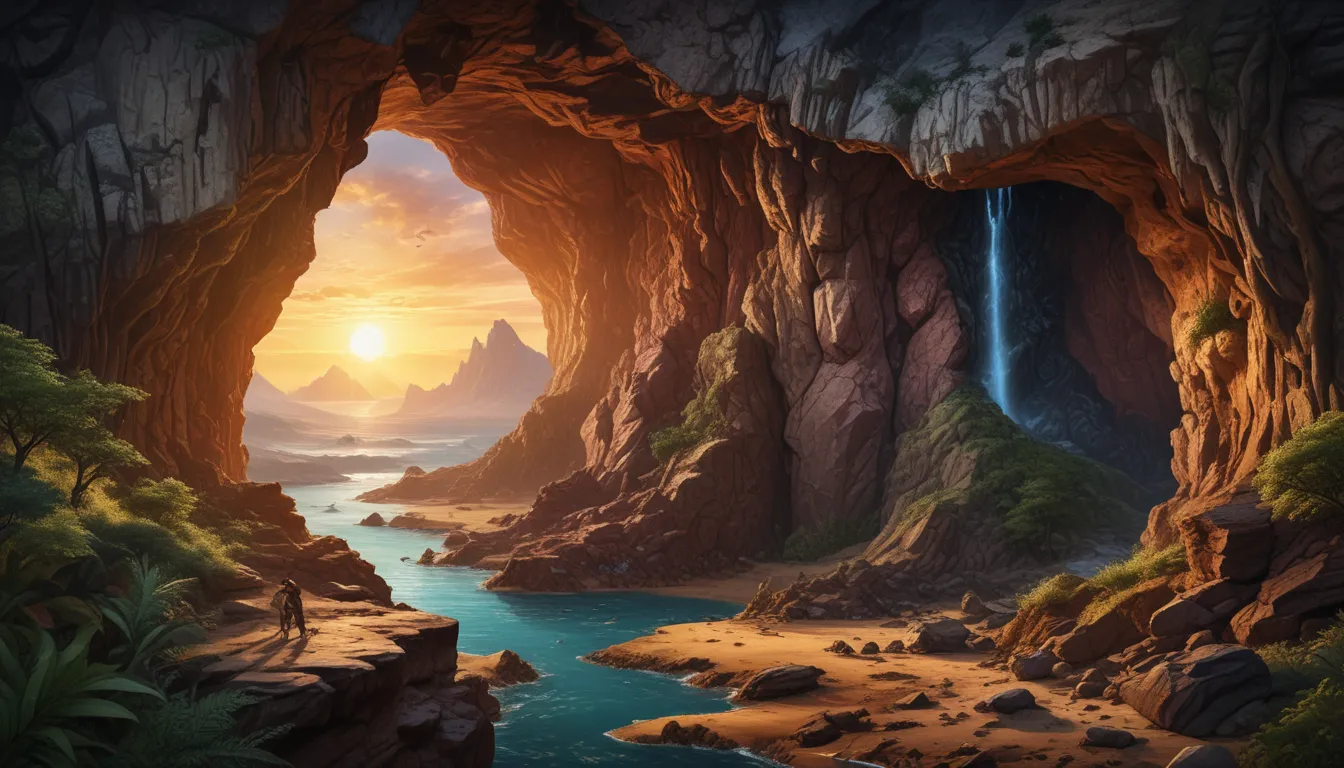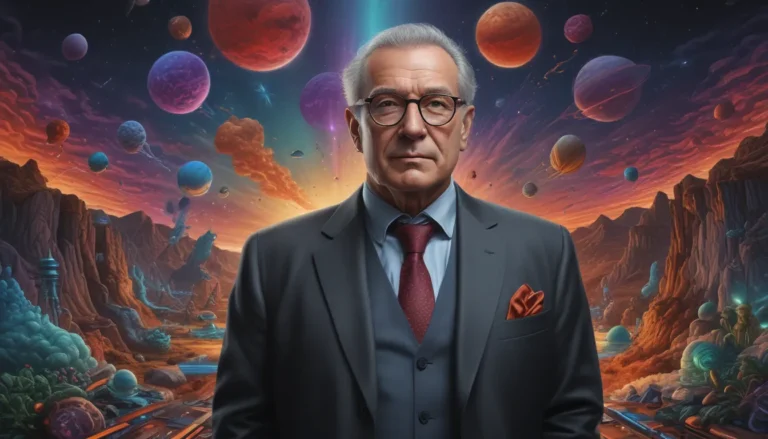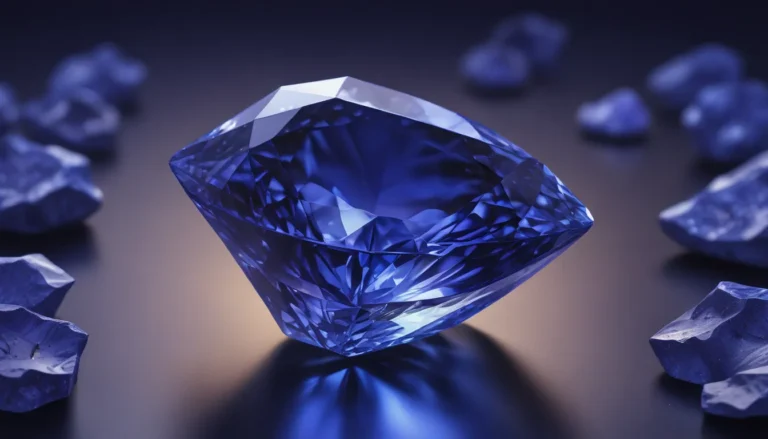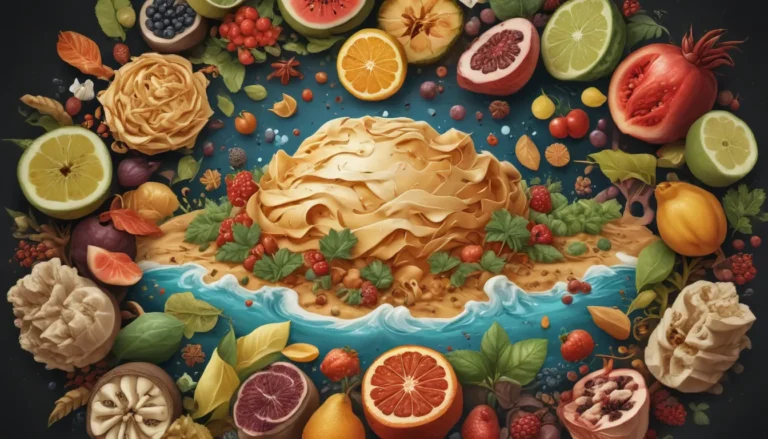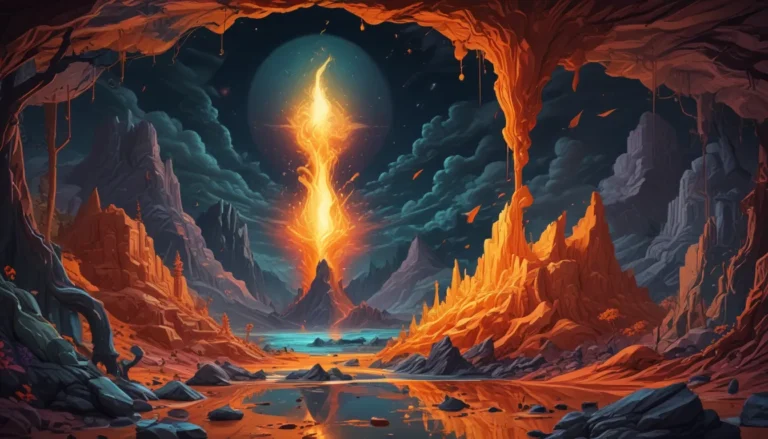A Note About Images: The images used in our articles are for illustration purposes only and may not exactly match the content. They are meant to engage readers, but the text should be relied upon for accurate information.
The Earth’s crust is not just a superficial layer beneath our feet; it is a dynamic and essential component of our planet, shaping its surface and influencing geological phenomena. In this article, we will delve into the fascinating world of the Earth’s crust, uncovering 30 great facts that showcase its complexity, diversity, and significance in our world. From the composition of rocks to the forces that drive tectonic movements, we will embark on an enlightening journey to explore the hidden wonders of the Earth’s crust and gain a deeper understanding of the forces that have sculpted our planet over millions of years.
Key Takeaways:
- The Earth’s crust is a dynamic layer that shapes our planet’s surface, supports life, and holds valuable resources, making it a fascinating subject for exploration and scientific discovery.
- The Earth’s crust plays a crucial role in shaping our world, sustaining life, and influencing geological processes, highlighting its indispensable nature in the Earth system.
Unveiling the Earth’s Crust
Before we delve into the intricate details of the Earth’s crust, it is essential to understand its fundamental characteristics. The Earth’s crust forms the outermost shell of our planet, covering its surface with a diverse array of rocks and minerals. This solid layer plays a vital role in supporting life on Earth and serves as a reservoir of valuable resources that are crucial for various industrial, technological, and economic activities.
The Dynamic Nature of the Earth’s Crust
The Earth’s crust is far from being static; it is in a constant state of motion and transformation. This dynamism is driven by a myriad of geological processes, including tectonic plate movements, volcanic activity, and erosion. These dynamic forces continuously shape and mold the Earth’s crust, contributing to the diverse landscapes and geological features that define our planet.
The Composition of the Earth’s Crust
The Earth’s crust is composed of a variety of rocks and minerals, each with its unique properties and characteristics. The primary types of rocks found in the Earth’s crust include igneous, metamorphic, and sedimentary rocks, which contribute to the diverse nature of the crust and the geological processes that shape it.
- Igneous rocks: Formed from the solidification of molten magma, igneous rocks constitute a significant portion of the Earth’s crust. These rocks are characterized by their crystalline structure and range from intrusive (formed beneath the surface) to extrusive (formed on the surface) varieties.
- Metamorphic rocks: Created through the alteration of existing rocks by heat and pressure, metamorphic rocks exhibit distinct textures and mineral compositions. This process, known as metamorphism, transforms rocks into new crystalline forms, contributing to the geological evolution of the Earth’s crust.
- Sedimentary rocks: Derived from the accumulation and cementation of sediment particles, sedimentary rocks are prevalent in the Earth’s crust. These rocks often contain valuable fossil records and provide clues about past environments and geological events.
The Varied Thickness of the Earth’s Crust
Contrary to popular belief, the Earth’s crust is not uniform in thickness. The crust can vary in depth, ranging from 3 to 43 miles (5 to 70 kilometers), with oceanic crust being thinner than continental crust. This variation in thickness influences geological processes, topography, and the distribution of resources across the planet.
The Continental vs. Oceanic Crust
One of the distinguishing features of the Earth’s crust is the differentiation between continental and oceanic crust. The continental crust is generally thicker and less dense than the oceanic crust, leading to variations in topography and geological processes. This fundamental difference plays a significant role in shaping the Earth’s surface and influencing the distribution of resources and habitats.
The Tectonic Puzzle: Understanding Plate Movements
A fundamental concept in geology, plate tectonics explains the movement and interactions of the Earth’s lithospheric plates, which form the rigid outer layer of the planet. The Earth’s crust is divided into several large and small tectonic plates that float on the semi-fluid asthenosphere beneath them. The dynamic interactions between these plates give rise to earthquakes, volcanic eruptions, and mountain-building processes, shaping the Earth’s surface over geological time scales.
Unveiling Geological Mysteries: A Look Into Earth’s History
The Earth’s crust serves as a vast repository of geological history, preserving evidence of past environments, ancient life forms, and the geological events that have shaped the planet over millions of years. Geological formations within the crust provide valuable insights into the Earth’s past, offering clues about the evolutionary processes that have sculpted our world into its present form.
Harnessing the Power of the Earth’s Crust: Geothermal Energy
The Earth’s crust is not just a passive layer; it is a source of renewable and sustainable energy in the form of geothermal resources. These resources, derived from heat within the Earth’s interior, can be harnessed for energy production, offering a clean alternative to traditional fossil fuels. Geothermal energy represents a promising avenue for combating climate change and meeting the growing energy demands of our society.
The Earth’s Crust and Human Civilization
Human civilization has long relied on the Earth’s crust for essential resources, such as building materials, metals, and minerals. The rocks and minerals found in the Earth’s crust serve as the foundation for construction, infrastructure development, and manufacturing, shaping the built environment of our societies. Understanding the composition and distribution of these resources is crucial for sustainable resource management and responsible resource exploitation.
Exploring the Depths: Scientific Drilling in the Earth’s Crust
Scientific drilling projects provide a unique opportunity to explore the depths of the Earth’s crust and unravel its mysteries. By extracting core samples from deep within the crust, scientists can study the composition, structure, and history of the Earth’s subsurface, shedding light on geological processes and the evolution of our planet over time. These scientific endeavors are essential for advancing our understanding of the Earth’s crust and its role in shaping the world we inhabit.
Embracing the Earth’s Inner Workings: Mantle Dynamics and Crustal Interactions
The interactions between the Earth’s crust and the underlying mantle are crucial for understanding the planet’s dynamic processes and surface features. The movements of tectonic plates, volcanic activity, and geological phenomena are intimately linked to the dynamics of the Earth’s mantle, highlighting the interconnected nature of the Earth’s geological systems. By studying these interactions, scientists gain valuable insights into the forces that drive geological processes and shape the world around us.
Unraveling the Complex Beauty of Earth’s Crust: A Call to Exploration
As we journey through the diverse landscapes and geological wonders of the Earth’s crust, we are reminded of the intricate beauty and profound significance of this essential layer of our planet. From geological mapping to resource exploration, the Earth’s crust offers a wealth of opportunities for discovery and scientific inquiry. By embracing the complexities and marvels of the Earth’s crust, we deepen our connection to the Earth and gain a deeper appreciation for the dynamic forces that have shaped the world we call home.
Conclusion
The Earth’s crust is a realm of wonder and discovery, filled with geological mysteries and scientific revelations waiting to be unveiled. By exploring the intricate details and fascinating facts about the Earth’s crust, we gain a deeper understanding of its role in shaping our planet and sustaining life on Earth. From the forces that drive tectonic movements to the resources that support human civilization, the Earth’s crust is a dynamic and essential component of our world. As we continue to explore and study this captivating layer of our planet, we uncover invaluable insights that not only expand our scientific knowledge but also offer practical applications in various fields. Embracing the complexities and marvels of the Earth’s crust invites us to a journey of exploration and discovery, uncovering the hidden wonders that shape the world we inhabit.
FAQs
-
What are the main components of the Earth’s crust?
The Earth’s crust primarily consists of oxygen, silicon, aluminum, iron, calcium, sodium, potassium, and magnesium, forming various minerals and rocks. -
How does the Earth’s crust contribute to volcanic activity?
Volcanic activity is primarily driven by the movement and interaction of tectonic plates within the Earth’s crust, leading to the release of magma, gases, and volcanic materials through volcanic vents and fissures.
Embark on a journey of discovery and exploration as we unravel the captivating mysteries of the Earth’s crust, inviting you to broaden your understanding and appreciation of the geological wonders that lie beneath our feet. Join us as we delve into the hidden world of minerals, marvel at the awe-inspiring majesty of submarine mountains, and unlock the secrets of Earth’s most remarkable geological features. The Earth’s crust awaits your exploration, inviting you to uncover the profound beauty and complexity of our planet’s dynamic and ever-changing surface.
